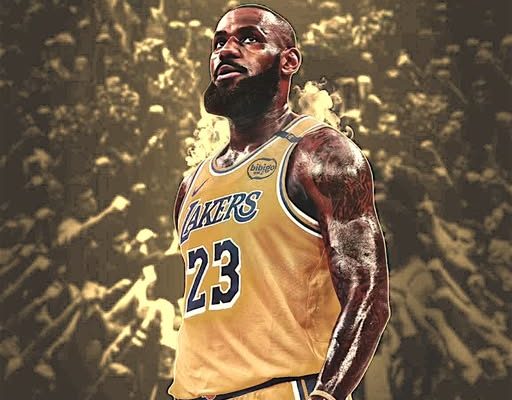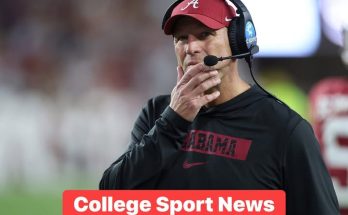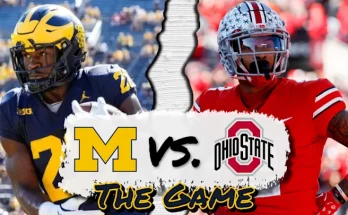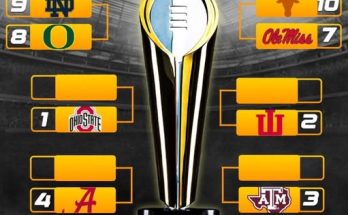BREAKING: All signs point to the Los Angeles Lakers wanting to move on from LeBron James by the spring of 2026, signaling what could be the end of one of the most iconic partnerships in modern NBA history. What began as a hopeful marriage between one of the most storied franchises in basketball and arguably the greatest player of all time may soon conclude with both parties looking for fresh starts. The hints, whispers, and subtle shifts in the Lakers’ approach to roster building, cap management, and internal planning all suggest that a significant transition is underway. For many fans and league observers, this potential parting of ways is both surprising and inevitable.
When LeBron James joined the Lakers in the summer of 2018, it was more than just another superstar changing teams. It was a cultural and competitive shift that reignited the championship ambitions of a struggling franchise. At the time, the Lakers had missed the playoffs for five consecutive seasons. LeBron’s arrival, even before the addition of Anthony Davis, immediately gave them credibility and direction. In 2020, that decision paid off with a title in the Orlando bubble, cementing LeBron’s legacy and reestablishing the Lakers as champions. But since that triumph, the path has been riddled with injuries, coaching instability, inconsistent role players, and increasingly public frustrations.
Fast forward to 2025, and the landscape has changed significantly. LeBron, still playing at an elite level despite his age, is no longer the centerpiece of a long-term vision. The Lakers front office, under the leadership of Rob Pelinka and Jeanie Buss, has quietly shifted its focus from win-now to sustainability and youth development. Draft picks have become more guarded, player development staff have been expanded, and the team has shown a clear interest in grooming younger talent like Max Christie and Jalen Hood-Schifino while pursuing rising stars in the trade market who fit a longer timeline. These aren’t decisions driven by a desire to maximize the final seasons of LeBron’s career. Instead, they’re moves that speak to an organization preparing for life after its current superstar.
Another indicator is the handling of contracts and cap flexibility. The Lakers have been careful not to tie themselves down to expensive, long-term deals that would inhibit their ability to pivot quickly. LeBron, who signed a two-year extension in 2022, holds a player option for the 2025–26 season. That option is worth over $50 million and will be a crucial domino in determining how the next phase of the Lakers’ era unfolds. While LeBron has previously expressed a desire to play with his son Bronny, potentially even on the same team, the Lakers have not made any strong indications that they intend to align their plans around that family milestone. They did draft Bronny in the second round of the 2024 NBA Draft, but the pick felt more like a nod to LeBron’s legacy than a foundation for the future.
Privately, there have been rumblings among NBA executives and insiders that the Lakers would prefer not to be held hostage by the whims of a superstar nearing 41 years old. While LeBron’s production remains impressive, there is an acknowledgment that accommodating him often comes with logistical and strategic sacrifices. The Lakers have bent over backwards for him—from coaching hires to roster construction—sometimes to the detriment of cohesion and long-term vision. Moving on would allow them to reset, reclaim autonomy in decision-making, and usher in a new era with a clean slate.
The tension isn’t personal—it’s strategic. LeBron’s brand and stature have been assets to the Lakers from both a business and basketball standpoint. Ticket sales, jersey revenue, national television appearances, and media coverage all skyrocketed during his tenure. However, the Lakers are not simply a business entity—they are a competitive institution. The organization has 17 NBA championships and a deeply entrenched culture of pursuing greatness through structure, planning, and often, ruthless reinvention. Even Kobe Bryant, the franchise’s most beloved modern icon, wasn’t exempt from the realities of aging and diminishing returns. The Lakers’ history shows a pattern of knowing when to pivot, and that time appears to be approaching once again.
Some analysts have pointed to the subtle shifts in how LeBron is discussed publicly by Lakers leadership. Where once there were exuberant praises and declarations of his unmatched value, there is now more measured language, often emphasizing team goals over individual timelines. After a disappointing exit in the 2024–25 playoffs, the team’s post-mortem focused heavily on depth, defensive identity, and a collective mentality. LeBron’s name came up, but not in the tone or context that would suggest he is still considered the franchise’s singular driving force. It is this measured change in tone that many insiders view as telling.
Even LeBron himself seems to be preparing for what comes next. While he has never explicitly stated his intention to leave the Lakers, his tone in recent interviews has been more reflective and less committal. He speaks openly about legacy, life after basketball, and the importance of family. He has hinted at possibly playing elsewhere with Bronny or even exploring team ownership or front office roles after retirement. These aren’t the words of someone fully invested in a long-term run with the Lakers. They’re the musings of a man surveying his options.
It’s also worth considering the league’s evolving competitive dynamics. The Western Conference is loaded with emerging contenders like the Oklahoma City Thunder, Minnesota Timberwolves, and Sacramento Kings, all built around younger cores. To keep up, the Lakers need to balance star power with adaptability and youth. LeBron, as brilliant as he remains, operates on a timeline that’s out of sync with where the NBA is heading. The Lakers’ desire to pivot isn’t a criticism of his value—it’s a reflection of the shifting sands beneath them.
By the spring of 2026, the Lakers may very well be in the process of moving on. Whether it’s a mutual decision or a unilateral organizational shift, the writing is increasingly on the wall. LeBron may decline his player option, or the Lakers may make it clear they intend to prioritize cap space, younger assets, and a different style of play. Either way, the partnership that began with such promise will likely end not in scandal or bitterness, but in quiet divergence. A respectful parting of ways where both sides acknowledge that the road forward looks different than the road they’ve traveled together.
Of course, there’s always the chance that things could change. LeBron might have a resurgence, the Lakers might stumble in finding a viable path forward without him, or Bronny could suddenly blossom into a cornerstone player that warrants keeping LeBron around. But based on everything currently visible—the roster decisions, the public messaging, the internal philosophies—the most probable outcome is a farewell by 2026.
In the end, LeBron James’ time with the Lakers will be remembered fondly. He delivered a championship, restored the franchise’s competitive spirit, and brought global attention back to the purple and gold. But sports, like life, is about evolution. The Lakers have always moved forward—whether from Magic Johnson to Shaq, from Shaq to Kobe, and now, perhaps, from LeBron to whatever comes next. The spring of 2026 could mark the closing of this particular chapter, and the beginning of another. Whether that new era brings glory or struggle remains to be seen, but one thing is clear—the Lakers are preparing to turn the page.



